- Home
- Isaac Hooke
Flagship (A Captain's Crucible #1) Page 5
Flagship (A Captain's Crucible #1) Read online
Page 5
"Any signs of contagions in the air?" Robert said.
The science officer, one Hayley O'Rielly, extended a scanning device. "Seems fine."
Robert removed his helmet. His face felt slightly chilly without his own respirations reflecting back onto him, but the insulation layer still shrouding his head and neck more than made up for the sensation—he might as well have been wearing a winter cap and scarf.
The air smelled stale and musty. "Circulators aren't operating," Robert noted.
He secured the helmet to his utility belt and detached the lamp, holding it like a flashlight. The engineer opted to remove his own helmet but the science officer and MOTHs kept theirs on. Robert's earpiece ensured he would still hear the latter individuals.
The soldiers launched two small, battery-powered surveillance drones, called HS4s. These were rotor-based quadcopters, meant for operation in atmospheres. When dispatched to planetary surfaces, an energy harvesting mode allowed the drones to collect power from updraft regions via regenerative braking; that, combined with solar panels further boosted the battery capacities to near infinite levels, barring heavy cloud cover or extended dark side operation. Under shipboard conditions the batteries would still last several hours, of course.
The drones vanished down the passageway to search for survivors.
The party advanced. Rade led the way, with the two combat robots directly in front of him. The MOTH petty officer brought up the rear.
With his aReal, Robert attempted to connect to the local Li-Fi network, which should have been available through the emergency LEDs, but it proved inactive.
"Anyone else able to connect to the Li-Fi?" Robert said.
He was greeted by a chorus of negative replies.
Robert glanced at the map displayed in the upper right of his HUD. He had downloaded the vessel blueprints before coming aboard, and the current position of each party member was shown as a blue dot on that map. The blueprint scrolled with each step Robert took, ensuring that his dot always remained in the center.
When the group reached an intersection, the engineer spoke up.
"According to the schematics, engineering is this way." Pierson nodded toward the left passageway. "Four decks down, five frames aft."
"Where are the HS4s?" Robert asked Rade.
"Currently en route to the bridge," the chief answered. "I can have them turn back and scout this way instead."
"That's fine," Robert said. "Have they found anyone, or spotted anything unusual, yet?"
"No, Commander."
"Lead the way." Robert beckoned toward the left passageway.
Rade directed the Centurions into the passage and the group followed after them.
Four decks down, roughly twenty meters from engineering, Rade and his two combat robots paused. "Commander."
Robert joined him.
The soldier pointed out blaster burns and melted metal on the bulkhead. "Judging from the placement and direction of the damage, I'd guess the blaster fire came from engineering. The damage profile is typical of the sidearms issued to security personnel aboard such a research vessel."
Robert glanced down the passageway toward engineering. There were several more scars along the bulkhead.
"The HS4s are reporting similar scarring on the bridge," Rade said.
Robert withdrew the pistol from his belt, a standard issue plasma blaster.
"Chief?" Robert said.
The MOTH and two Centurions led them onward.
The party paused by the entrance to engineering. A perfect circle had been cut into the hatch. The surrounding metal exhibited no sign of the melting that would be typical of a laser torch. It was as if the molecules in the center of the door had simply lost cohesion and dispersed.
The science officer scanned the opening. "Atomized."
"Does the United Systems have any technology that could do this?" Robert asked him.
Hayley pressed his lips together. "No, but I've heard rumors the SKs have experimented with miniaturized particle accelerators."
"We've all heard a lot of rumors about the Sino-Koreans," Robert said. "Most of which are false."
Robert studied the opening a moment. It was large enough for the party members to squeeze through, one at a time, even the MOTHs in their bulkier suits. He beckoned toward the elite soldiers.
Rade ordered the combat robots inside.
The Centurions leaped through the opening in sequence; when they landed beyond, the first robot went high, the second low.
"Entrance clear!" one of the robots said.
Rade joined the two robots in the compartment, while the petty officer remained outside to guard the rest of the away team.
Rade and the robots vanished from view, but Robert was still aware of the positions of all three thanks to the HUD overlaying his vision.
Weapon in hand, Robert stood beside the remaining soldier and watched the outer passageway anxiously, ready to fire on anything that moved.
"Clear!" Rade said over the comm a moment later.
Robert hauled himself through the opening. When everyone was inside, the two MOTHs assumed guard positions beside the hatch, while the combat robots watched the passageway beyond.
The engineering section of any ship was basically a control room used to monitor the geronium reactors aboard the vessel. The compartment was relatively nondescript—steel walkways ran along the upper portion, while desks with swivel chairs in front of them protruded from the lower bulkheads. Like the bridge of the Callaway, there weren't any obvious control panels or displays. All monitoring of pressure, power, pumps, coolant and so forth was done via aReal.
Coffee cups, water bottles, and other disallowed personal belongings hinted at a rapid departure by shift personnel.
"Nothing showing up on the device list," Pierson said. "Looks like I'm going to have to interface manually."
Pierson lowered himself to the deck beside one of the stations. He slid his hand along the underside of the station—Robert had the impression the engineer was opening a panel. Pierson produced a small cord from his utility belt and plugged the male end into something underneath the desk.
"I'm in," Pierson said. "Appears the system was given a hard shutdown."
"Will you be able to restore power?" Robert asked him.
In answer, the floor shook as the nearby reactor hummed to life. The main lights activated a moment later.
Wearing a big grin, Pierson glanced at the commander. "Life support and other systems are coming back online. The AI should be up in a few minutes, after the startup sequence reconstructs the damaged portions of the holographic drives."
"What caused the damage?" Robert said.
"The hard shutdown, I'm guessing." Pierson pulled himself to his feet. "The usual procedure is to follow a soft shutdown: issue termination signals to all running software processes and threads, wait for them to safely close, then cycle off the main reactor. The process takes twenty minutes on a good day. In this case, someone cut the power all at once, without observing the proper shutdown sequence."
On Robert's aReal, the device list abruptly populated, filling with previously inaccessible systems. Robert accessed the bridge video feed and switched to VR mode.
The engineering compartment vanished and he found himself standing in the corner of the bridge where the one hundred-eighty degree lightfield camera he'd accessed was situated. The compartment possessed a similar "Round Table" arrangement of desks as the Callaway, though the absence of any watch personnel gave the bridge an eerily quiet atmosphere. There was a perfectly circular hole cut into the main bridge hatch, just like in engineering.
"I can confirm that the Selene still possesses its full complement of lifepods," Pierson's disembodied voice came to Robert. "No one evacuated the ship. The crew just vanished."
"Can you check if any of the airlocks were opened recently?"
"Normally I would be able to," Pierson said. "But it appears the archives have been wiped."
; "What do you mean?"
"Exactly what I said," Pierson explained. "I'm not able to find any logs pertaining to the period before I restarted the system. Not for the airlocks or anything else. And this isn't simple holographic drive corruption—the archives were thoroughly erased."
Robert proceeded to cycle through the video feeds from various compartments throughout the ship. Sick bay. Cargo bay one and two. Hangar bay one. Living quarters. Machinery. There were no signs of life anywhere, and the only movement he spotted was one of their own HS4s drifting through a passageway.
Robert thought of something and cycled back to hangar bay one. "Maxwell, how many shuttles does an Onyx class research vessel come standard with?"
It took two seconds for the question to make the trip first to the comm node in the Dragonfly, then to the Callaway. The response came in another two seconds.
"According to system records, three standard Dragonfly-class shuttles," the familiar voice of the Callaway's AI returned.
"I'm only seeing two. Captain, are you getting this? One of the shuttles is missing."
"I see it," Jonathan's voice returned four seconds later. "Try to confirm the missing shuttle with the Selene's AI when it comes back online."
Robert switched back to AR mode; the bulkheads of engineering surrounded him once again.
"Greetings," a disembodied voice cheerfully announced. "I am Alfred, AI of the Onyx class military research vessel, the Selene."
"Alfred, recognize Commander Robert Cray of the Callaway." Via the aReal, Robert dispatched his command codes. Biometrics including voice pattern, facial features and retinal capillary make-up would be included in the verification process.
"Commander Robert Cray of the Callaway recognized," Alfred responded.
Robert decided to start with the question foremost on his mind. "Where's the crew, Alfred?"
"Unknown," the AI responded.
He exchanged a glance with Pierson. The engineer nodded.
"Without the archives, the AI won't have any idea," Pierson said.
Robert tried another question. "Alfred, are there any video archives available for viewing?"
"Negative. Video archives have been deleted."
"How many shuttles did the Selene have aboard?"
"Unknown."
Robert was growing frustrated. "Display ship's manifest."
"The manifest has been deleted," the AI responded.
"By whom?"
"Unknown."
The commander was beginning to wonder if the AI was damaged.
"Maxwell," Robert said. "Can you interface with the Selene's AI and perform diagnostics?"
"Interfacing," Maxwell returned via the aReal four seconds later. In half a minute came the reply: "The Selene's AI is operating within acceptable parameters. However, I am unable to retrieve any systems logs, as all of the Selene's internal databases have been overwritten with random data. These include databases pertaining to human history, government, colonized planets, and naval ships, in addition to those focused on the Selene's internal operations."
"Can you determine who authorized the wipe?" Robert asked the Callaway's AI.
Four seconds later Maxwell responded: "Unfortunately, I cannot."
"Commander," Rade said. "One of the HS4s is returning interesting footage from the mess hall."
Robert switched back to VR mode and cycled to the video feed from the mess hall. He had overlooked that compartment in his previous scan.
In the mess hall tables and chairs were overturned in defensive positions, and scorch marks dotted the bulkheads on either side of the entrance. It looked like a last stand of some sort had taken place there.
"Well, they didn't give up without a fight," Robert muttered.
"Why aren't there any signs that the enemy returned fire?" Rade's disembodied voice came over the comm. "Look at the upturned tables and chairs. They're completely undamaged. Not even a scratch on any of them. Same with the far bulkhead. Completely unblemished."
"I don't like it." Robert switched back to engineering. "Chief, have the drones continue their sweep. Keep me updated on their findings."
The next few hours passed uneventfully. Robert made his way to the bridge with the science officer and both MOTHs, where he assumed a temporary command position. Meanwhile the drones discovered several more scorch marks throughout the ship, but not a single member of the Selene's original crew was discovered. Not even a dead body or inactive combat robot.
The captain ordered a skeleton crew comprised of three watches of junior officers to board the vessel, and he instructed Robert to return to the Callaway when the first group arrived. Before the commander left, he imaged the holographic drives in the small hope that Maxwell might be able to reconstruct a portion of the data. There was a chance the hard shutdown had interrupted the wipe, and that some of the data, though flagged as erased, might still be intact.
When he returned to the Callaway, Robert began transferring the image from his aReal to the ship's cloud computing resources over Li-Fi. That data was exabytes in size, and even with the incredible transfer rate of the wireless network the upload would still take an hour.
"Maxwell, I want you to analyze the image as it comes in," Robert instructed the AI. "See if you can find any fragments of intact data."
"The captain has given me permission to allocate three percent of my processing power to this task," the AI said a moment later.
"Thank him for me," Robert said. He wasn't sure how much processing power that would actually translate into, but given the extreme size of the data, the AI certainly had its work cut out for it.
six
Jonathan stared at the Selene on the external video feed. The last Dragonfly had unloaded the final replacement crew members in the hangar bay of the research vessel, and Jonathan was waiting only for the craft's return.
Robert joined him on the bridge.
"Any news from the latest relay drone launched past the moon?" the commander asked after sitting down.
Jonathan nodded. "It has returned three times so far, filling in more and more details from the dark side. There might be a crashed ship on the surface."
"The Aegis?"
"Ops isn't sure. The thermal signature of the area is completely blank. That could mean the Aegis hit hard enough to blow apart on impact. Or it could mean it's a different vessel entirely, or some kind of abandoned base. Since it's the dark side, we're not getting any visuals. Infrared is useless. All the data we have so far is from LIDAR, and we can only barely discern the shape. The science officer is convinced it's an entirely natural phenomena—the remains of some ancient meteorite—but given recent events, I'm not so sure. I had the ops station update the drone's orders before it left signal range, with instructions to fly much closer to the surface this time. Hopefully we'll get a better LIDAR scan."
Robert rubbed his right ear lobe. "So there were no signs of the previous drones we sent?"
"No."
"I don't like it," Robert said.
Jonathan forced a smile. "You think I do? But I'm not going to turn back, not until we get to the bottom of this."
"Captain, the final Dragonfly has returned," Ensign McNamara announced.
Jonathan nodded. "Ops, recall telemetry drones. Nav, plot a course for the dark side of the moon. Comm, inform the admiral of our intent."
After the chorus of affirmative answers, the astrogator at the nav station said: "Course plotted,"
"Helm, engage when ready," Jonathan said. "Tactical, instruct the remainder of the task unit to match speed and heading."
Robert glanced at the captain. "How did the admiral respond when you told him the Selene was empty?"
"As well as you can imagine," Jonathan said. "It completely spooked him. He wants us to rejoin the task group immediately."
"And I assume we're doing no such thing."
"Actually, we are," Jonathan said. "In order to return to the task group, we have to circumnavigate the gas giant. The admiral didn
't specifically say we couldn't fly past the dark side of the moon while doing so. Therefore, technically we're still following orders."
Robert smiled in understanding. "I see."
As the ships moved out, the captain stared at the tactical display. The Grimm, as usual, was lagging behind. The blue dot representing the Selene kept pace, however. Barely.
What the hell happened to you? Jonathan thought.
As the moments passed his attention drifted; the flashing dot that represented the Callaway on his aReal reminded him of something. He couldn't quite place it.
And then he knew: the heart rate monitor of intensive care. In his head, a phantom tone accompanied each flash. BEEP. BEEP.
He heard other sounds. The mechanical hiss of surgical weaver robots roving between beds. The soft voices of nurses conversing with other patients. The hushed sobs of family members. The cloying smell of antiseptic and bio-printed limbs.
He felt the phantom pain in his hands and feet, where he had lost three fingers and four toes to frostbite. He rubbed his thumb and forefinger together. The texture of the skin was off, similar to corrugated cardboard. Bio-printed digits always felt that way after the initial procedure. The doctors had offered to graft real skin grown from his epidermal cells onto the fingers, but Jonathan had refused. He wanted to remind himself that the digits weren't real.
"Captain," Robert said, rousing Jonathan back to the present. He glanced at the commander.
Robert nodded across the Round Table. Ensign McNamara was looking at him with some concern.
"What is it, Ensign?" Jonathan said.
"The relay drone has returned to comm range," the ensign said. "We've received the latest update from the dark side."
"Can we tell if the wreckage is the Aegis?"
"Judging from this data," McNamara said. "Whatever is down there definitely isn't natural. I don't think it's one of ours, however. I've extracted the background terrain from the LIDAR information and put together a rough composite."
On his aReal, Jonathan received a data transfer request from the ensign. He accepted and a rotating three dimensional image of the crash site appeared before him. It was a torus-shaped object, crumbling in several places. The outer surface appeared to fold back in upon itself like a Möbius strip.

 Warden 2
Warden 2 Devastator
Devastator Warden 4
Warden 4 Emperor
Emperor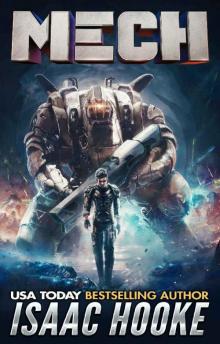 Mech
Mech Conqueror
Conqueror Fighter
Fighter The Forever Gate Ultimate Edition
The Forever Gate Ultimate Edition Defiler
Defiler Mech 2
Mech 2 Warden 3
Warden 3 Warden 1
Warden 1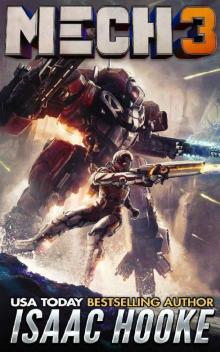 Mech 3
Mech 3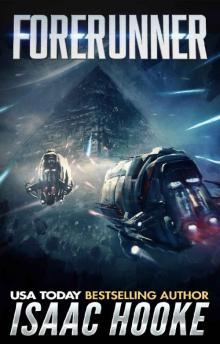 Forerunner
Forerunner The Alliance (AI Empire Book 2)
The Alliance (AI Empire Book 2) Breaker (Monster Tamer Book 1)
Breaker (Monster Tamer Book 1) Bender of Worlds
Bender of Worlds The Pendulum Swings (The Forever Gate Book 8)
The Pendulum Swings (The Forever Gate Book 8) The Link
The Link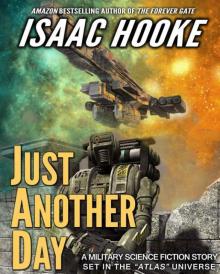 Just Another Day
Just Another Day Star Warrior
Star Warrior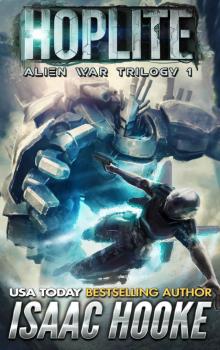 Alien War Trilogy 1: Hoplite
Alien War Trilogy 1: Hoplite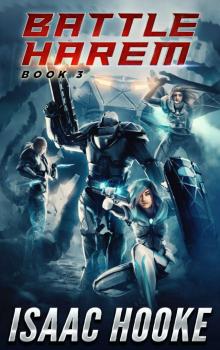 Battle Harem 3
Battle Harem 3 The Ethan Galaal Series: Books 1 - 3
The Ethan Galaal Series: Books 1 - 3 Reloaded
Reloaded Robot Dust Bunnies (Argonauts Book 5)
Robot Dust Bunnies (Argonauts Book 5) Battle Harem
Battle Harem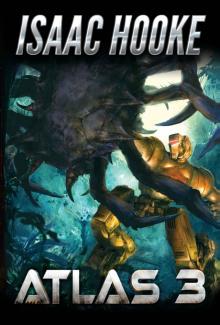 ATLAS 3 (ATLAS Series Book 3)
ATLAS 3 (ATLAS Series Book 3)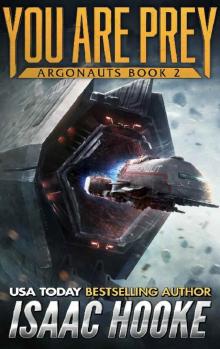 Argonauts 2: You Are Prey
Argonauts 2: You Are Prey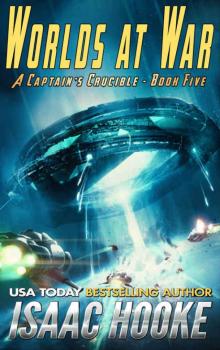 Worlds at War (A Captain's Crucible Book 5)
Worlds at War (A Captain's Crucible Book 5)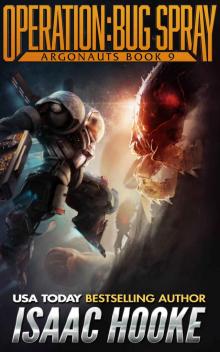 Operation: Bug Spray (Argonauts Book 9)
Operation: Bug Spray (Argonauts Book 9)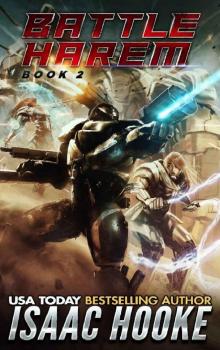 Battle Harem 2
Battle Harem 2 Redeemed (Bolt Eaters Trilogy Book 3)
Redeemed (Bolt Eaters Trilogy Book 3) Atlas
Atlas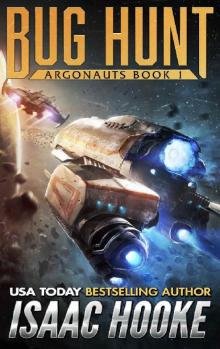 Argonauts 1: Bug Hunt
Argonauts 1: Bug Hunt Reactivated (Bolt Eaters Trilogy Book 1)
Reactivated (Bolt Eaters Trilogy Book 1)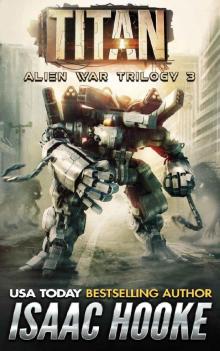 Alien War Trilogy 3: Titan
Alien War Trilogy 3: Titan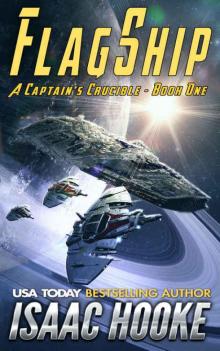 Flagship (A Captain's Crucible #1)
Flagship (A Captain's Crucible #1)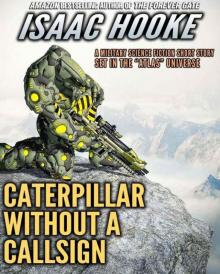 Caterpillar Without A Callsign
Caterpillar Without A Callsign The Forever Gate
The Forever Gate He Who Crosses Death (Star Warrior Quadrilogy Book 3)
He Who Crosses Death (Star Warrior Quadrilogy Book 3) Reforged (Bolt Eaters Trilogy Book 2)
Reforged (Bolt Eaters Trilogy Book 2) Refurbished
Refurbished Reloaded (AI Reborn Trilogy Book 2)
Reloaded (AI Reborn Trilogy Book 2) He Who Crosses Death
He Who Crosses Death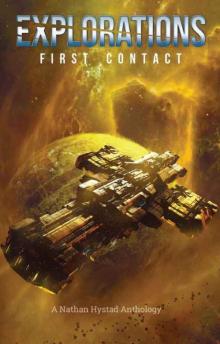 Explorations: First Contact
Explorations: First Contact Planet Killer (A Captain's Crucible Book 4)
Planet Killer (A Captain's Crucible Book 4)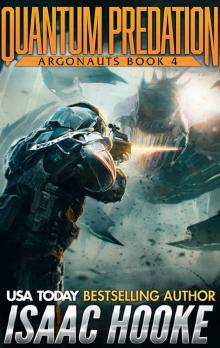 Quantum Predation (Argonauts Book 4)
Quantum Predation (Argonauts Book 4) Clandestine-IsaacHooke-FreeFollowup
Clandestine-IsaacHooke-FreeFollowup The Last Stand (The Forever Gate Book 9)
The Last Stand (The Forever Gate Book 9) City of Phants (Argonauts Book 6)
City of Phants (Argonauts Book 6)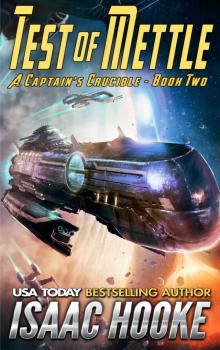 Test of Mettle (A Captain's Crucible Book 2)
Test of Mettle (A Captain's Crucible Book 2)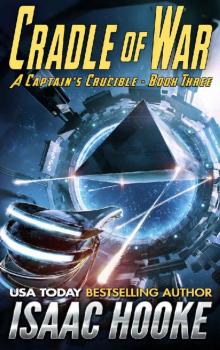 Cradle of War (A Captain's Crucible Book 3)
Cradle of War (A Captain's Crucible Book 3) Rade's Fury (Argonauts Book 7)
Rade's Fury (Argonauts Book 7) Rebirth (The Forever Gate Book 6)
Rebirth (The Forever Gate Book 6) The Forever Gate Compendium Edition
The Forever Gate Compendium Edition Mechs vs. Dinosaurs (Argonauts Book 8)
Mechs vs. Dinosaurs (Argonauts Book 8)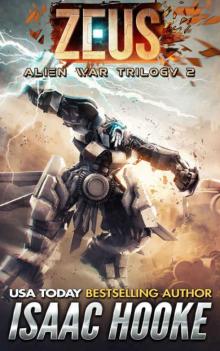 Alien War Trilogy 2: Zeus
Alien War Trilogy 2: Zeus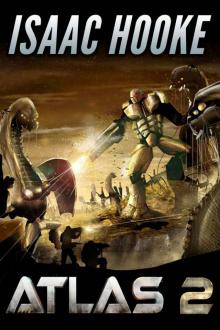 ATLAS 2 (ATLAS Series Book 2)
ATLAS 2 (ATLAS Series Book 2)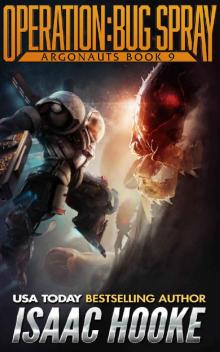 Operation_Bug Spray
Operation_Bug Spray